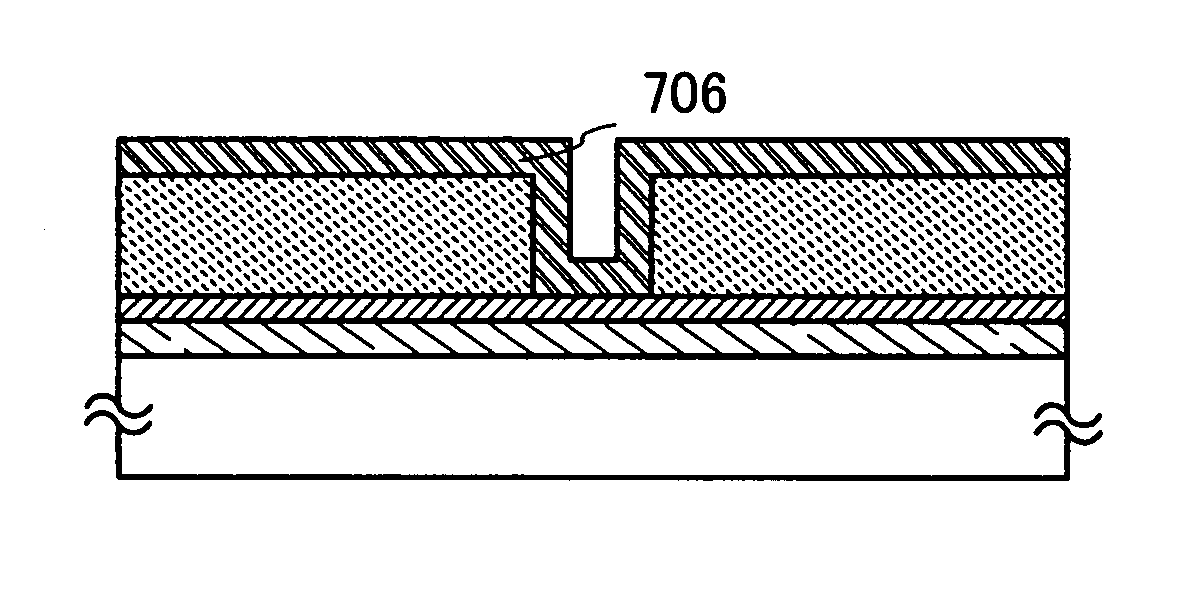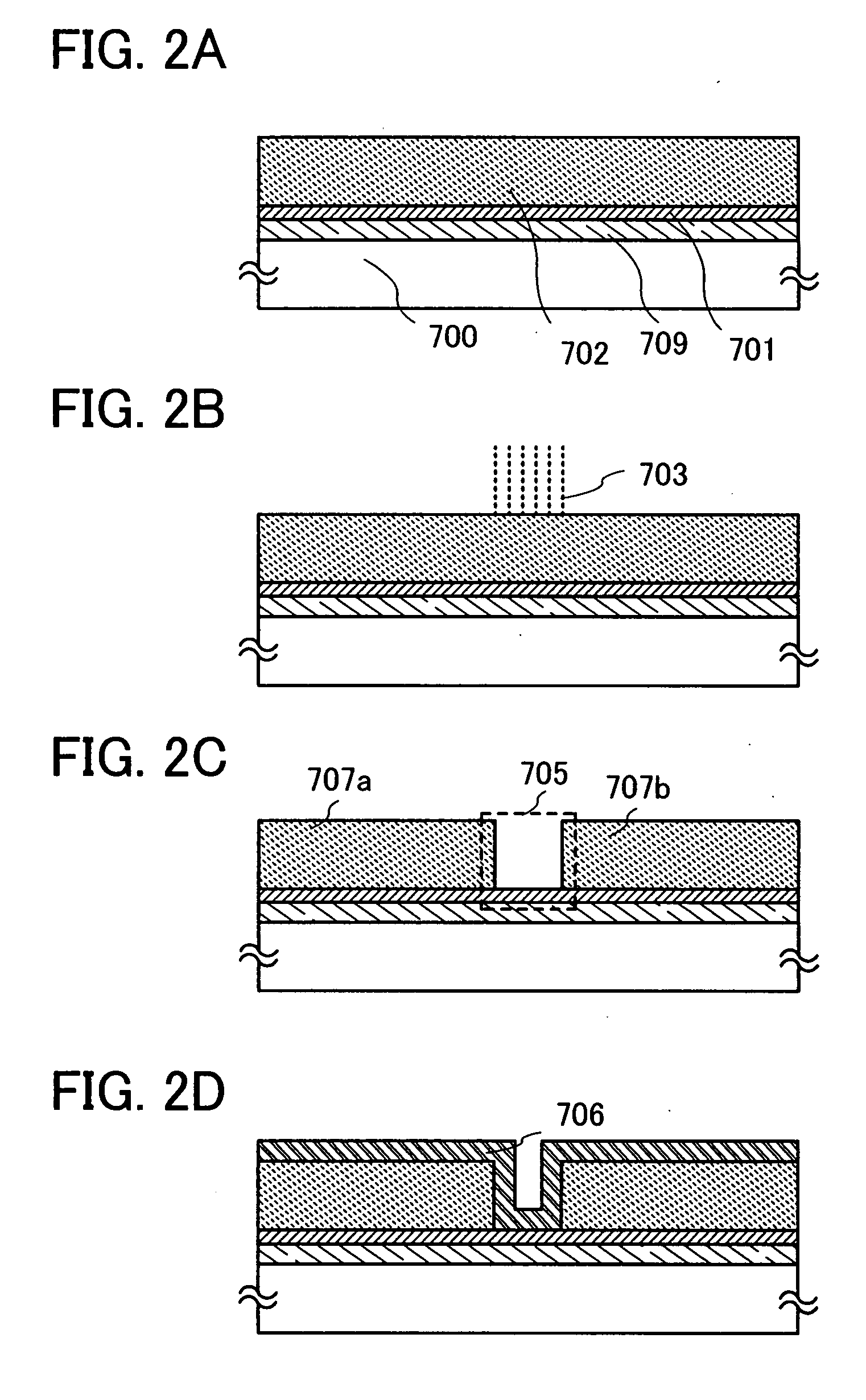Method for manufacturing display device
a display device and manufacturing method technology, applied in semiconductor devices, instruments, electrical devices, etc., can solve the problems of damage to the insulating layer stacking, reduce the number of photolithography steps, and reduce the cos
- Summary
- Abstract
- Description
- Claims
- Application Information
AI Technical Summary
Benefits of technology
Problems solved by technology
Method used
Image
Examples
embodiment mode 1
[0053]In this embodiment mode, a method for forming a contact hole through a highly reliable and more simplified process at low cost is described with reference to FIGS. 1A to 1D.
[0054]When thin films (for example, conductive layers or semiconductor layers) which are to be stacked with an insulating layer interposed therebetween are electrically connected, an opening (so-called contact hole) is formed in the insulating layer. In this case, a mask layer is not formed over the insulating layer, and the opening is selectively formed by irradiation with laser light. A light absorbing layer having a function of absorbing irradiation light is formed, an insulating layer is stacked over the light absorbing layer, and then a region where the opening is formed in a stack including the light absorbing layer and the insulating layer is selectively irradiated with laser light from the insulating layer side. Laser light transmits through the insulating layer and is absorbed by the light absorbin...
embodiment mode 2
[0078]In this embodiment mode, a method for forming a contact hole through a highly reliable and more simplified process at low cost is described with reference to FIGS. 2A to 2D.
[0079]In this embodiment mode, an example of Embodiment Mode 1 is described, in which the conductive film and the stack of the light absorbing layer and the conductive layer are electrically connected to each other with the insulating layer interposed therebetween.
[0080]Description is specifically made with reference to FIGS. 2A to 2D. In this embodiment mode, as shown in FIGS. 2A to 2D, a conductive layer 709, a light absorbing layer 701, and an insulating layer 702 are formed over a substrate 700. In this embodiment mode, the light absorbing layer 701 is formed using a conductive material and can function as a conductive layer. In addition, the conductive layer 709 may be formed using a material that absorbs laser light so that it also functions as a light absorbing layer.
[0081]The conductive layer 709 an...
embodiment mode 3
[0093]In this embodiment mode, a method for manufacturing a display device through a highly reliable and more simplified process at low cost is described with reference to FIGS. 3A to 3C.
[0094]In this embodiment mode, when processing a thin film into a desired pattern, a component (also referred to as a pattern) such as a conductive layer or a semiconductor layer is selectively formed so as to have a desired shape without the use of a photolithography process. In the present invention, a component (also referred to as a pattern) refers to a conductive layer such as a wiring layer, a gate electrode layer, a source electrode layer, or a drain electrode layer, a semiconductor layer, an insulating layer, or the like included in a thin film transistor or a display device and can be any component formed to have a predetermined shape.
[0095]In this embodiment mode, a light absorbing film such as a conductive film or a semiconductor film is formed over a light-transmitting transfer substrate...
PUM
 Login to View More
Login to View More Abstract
Description
Claims
Application Information
 Login to View More
Login to View More - R&D
- Intellectual Property
- Life Sciences
- Materials
- Tech Scout
- Unparalleled Data Quality
- Higher Quality Content
- 60% Fewer Hallucinations
Browse by: Latest US Patents, China's latest patents, Technical Efficacy Thesaurus, Application Domain, Technology Topic, Popular Technical Reports.
© 2025 PatSnap. All rights reserved.Legal|Privacy policy|Modern Slavery Act Transparency Statement|Sitemap|About US| Contact US: help@patsnap.com



